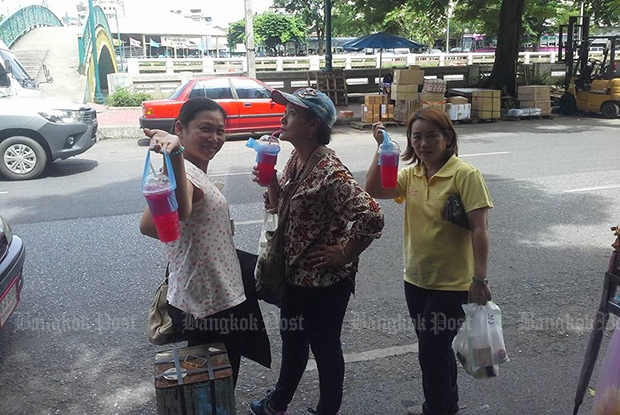
The popular street drink iced <i>sala</i>, a flavoured syrup mixed with soda that is also known as <i>daeng</i> soda, contained the highest amount of sugar among five beverages tested, raising serious health concerns.
Chutima Sirikulchayanonta, a health specialist with the Bright and Healthy Thai Kid Project which is trying to combat childhood obesity, said a recent survey was conducted of roadside soft drink stalls near Mahidol University in the Phaya Thai area, around Victory Monument and along Silom. It found that five cold beverages had the highest amount of sugar.
A 250ml-glass of iced daeng soda had the highest amount of sugar, with 15.5 teaspoons, followed by iced Ovaltine drink (13.3 teaspoons), iced tea mixed with lemon juice (12.6 teaspoons), iced tea (12.5 teaspoons) and iced milk tea (12.3 teaspoons), said Dr Chutima, who head the project which was supported by the Thai Health Promotion Foundation (ThaiHealth).
The amount of sugar in each beverage exceeded the World Health Organisation's recommended intake of not more than six teaspoons of sugar a day.
Consumption of sweetened drinks like these was responsible for causing more Thais to suffer diabetes at a younger age, Dr Chutima said.
Physical checkups of Thais in 2014 and 2015, conducted jointly by ThaiHealth and the Public Health Ministry, showed that 4 million Thais were suffering from diabetes. Some 7.7 million Thais were at risk of suffering the disease, said Piyada Prasertsom, manager of the Sweet Enough Network.
Dr Piyada said syrup was absorbed quickly into the body, forcing the pancreas to work hard to adjust the level of sugar in the blood, therefore it was necessary to educate youths and young working people to understand the issue so they should adjust their consumption behaviour.